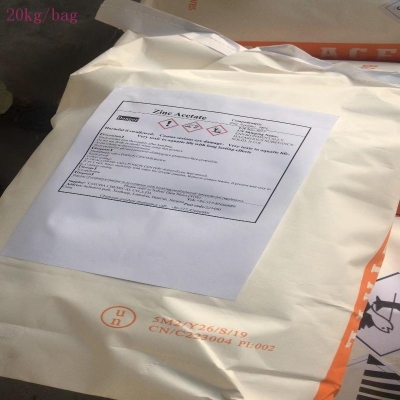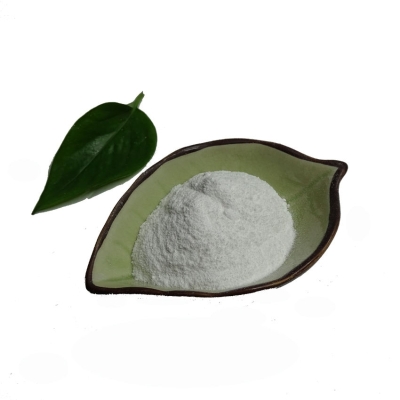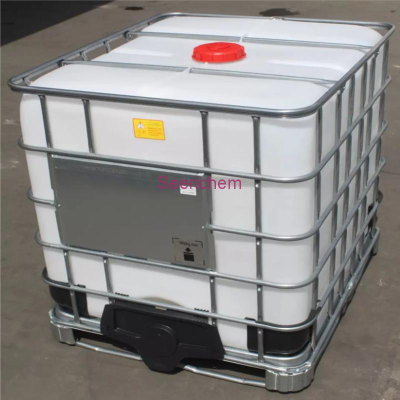-
Categories
-
Pharmaceutical Intermediates
-
Active Pharmaceutical Ingredients
-
Food Additives
- Industrial Coatings
- Agrochemicals
- Dyes and Pigments
- Surfactant
- Flavors and Fragrances
- Chemical Reagents
- Catalyst and Auxiliary
- Natural Products
- Inorganic Chemistry
-
Organic Chemistry
-
Biochemical Engineering
- Analytical Chemistry
-
Cosmetic Ingredient
- Water Treatment Chemical
-
Pharmaceutical Intermediates
Promotion
ECHEMI Mall
Wholesale
Weekly Price
Exhibition
News
-
Trade Service
Today, Xiu Xuefeng, executive vice chairman of the China Phosphate and Compound Fertilizer Industry Association, revealed to the reporter of "Agricultural Resources Guide": Regarding the "State Council Introduces Further Tax Reduction Measures" released yesterday, we checked with the responsible comrades of relevant departments early this morning: The fertilizer value-added tax rate will be reduced from 13% to 11%, and the relevant state departments will issue special documents for the specific implementation details.
In fact, the news has been circulated in the agricultural resources circle since yesterday, but it does not seem to have attracted much attention and discussion.
Many people in agricultural enterprises believe that the two taxation points seem to have little effect on the reduction of taxes for enterprises.
Is it true? In order to find out, the reporter of "Agricultural Resources Guide" interviewed a number of senior industry insiders for the first time to make calculations, and the result was this! ? The production link of the chemical fertilizer industry will reduce tax burdens of 14.
246 billion yuan! Xiu Xuefeng, executive vice chairman of the China Phosphate and Compound Fertilizer Industry Association, said that the industry has been operating extremely hard in the past two years.
In 2016, the nitrogen fertilizer industry has suffered losses for the entire industry for three consecutive years, and the overall profit of the phosphate fertilizer industry is only 640 million yuan, which is on the verge of loss.
According to statistics from the National Bureau of Statistics, the main business income of my country's nitrogen fertilizer, phosphate fertilizer, potash fertilizer, and compound fertilizer manufacturing industry in 2016 was 804.
9 billion yuan.
The fertilizer value-added tax rate has dropped by two points.
A rough estimate of the tax deductions or exemptions in the production process of the fertilizer industry The negative is: 8049/1.
13*0.
02=14.
246 billion yuan, which is a large number for the entire fertilizer industry, and it will indeed reduce the burden on enterprises.
One ton of coal-based urea will reduce the tax burden by about 21 yuan! Very impressive! Wu Aiping, director of the Accounting and Finance Department of Yangmei Fengxi Fertilizer Industry (Group) Co.
, Ltd.
, calculated such an account for reporters.
Taking coal as the raw material to produce urea as an example, the calculation is as follows: 1.
According to the current mainstream ex-factory price of Shanxi (including 13% tax) 1300 yuan (ton price, the same below), the value-added tax output is 1300/1.
13×13%=150 yuan ; Calculated according to the new value-added tax rate of 11%, the value-added tax output is 1300/1.
11×11% = 129 yuan; 2.
150 yuan-129 yuan = 21 yuan.
This 21 yuan means the amount of extra profit the company makes per ton of urea.
In the same way, coal is used as raw material to produce urea.
Under the assumption that the tax rate of purchased materials remains unchanged, the calculation is verified: 1.
Assuming that a ton of urea consumes 636 yuan of white coal (coal is subject to a 17% tax rate), these coals are purchased The corresponding VAT input tax amount is 636/1.
17×17%=92 yuan.
2.
150-92=58.
In other words, according to the 13% value-added tax rate, 58 yuan of value-added tax was originally required.
Calculated according to the 11% value-added tax rate, that is, the value-added tax needs to be paid 129-92=37 yuan.
Subtract 58-37=21 yuan for the two items.
The input tax that can be used to deduct the production of urea also includes the input of electricity, packaging, and auxiliary materials.
Assuming that the tax rate of purchased materials is unchanged, and the change of the steam tax rate is ignored, the new 11% value-added tax rate will be paid per ton of urea.
The value-added tax can be reduced by 21 yuan.
The cost savings of urea companies will be huge.
According to the further tax reduction measures introduced by the State Council, the natural gas value-added tax rate will also be reduced from 13% to 11%.
Therefore, if natural gas and coal are used as raw materials to produce urea, and the proportion of natural gas is small, this policy can also be enjoyed.
The specific data must be analyzed separately.
According to the latest data released by the National Bureau of Statistics, in 2016, the country produced a total of 70,049,200 tons of chemical fertilizers (equivalent to scalar amount), and produced 61.
92 million tons of urea (in kind).
According to the above calculation, the coal-based urea industry alone can reduce taxes by nearly 1 billion yuan! The circulation link will also enjoy the benefits brought by the 11% tax rate! Fu Chunhua, deputy inspector of the Agricultural Production Materials Bureau of the All-China Federation of Supply and Marketing Cooperatives and chairman of the Organic Fertilizer Branch of the China Agricultural Production Materials Circulation Association, said that a 2% reduction in value-added tax is good for the industry and can reduce production and circulation to a certain extent.
The burden of the business.
Last year, the national supply and marketing cooperative system’s sales of agricultural materials were 798.
67 billion yuan.
If calculated based on last year’s sales, the annual tax reduction would be 14.
1 billion yuan (7986/1.
13*0.
02 = 14.
1 billion yuan).
Ren Yajie, the deputy general manager of Yuntianhua Agricultural Material Chain Co.
, said that the tax rate reduction is good for enterprises, and the tax base is lowered by 2 points and tax revenue is lowered.
On the other hand, downstream distributors require a one-vote system for product sales.
The freight rate is 11% and the fertilizer rate is 13%.
In this way, the company is losing money.
Now it is leveled.
These two aspects are the benefits of this reform.
In addition, Li Haofeng, director of the strategic development affairs department of Jiangsu Huachang Chemical Co.
, Ltd.
, said that the purpose of this policy is to reduce taxes and reduce the burden on enterprises.
Not only will the value-added tax be reduced, but the related additional taxes based on the value-added tax will be reduced accordingly.
For the micro market, this policy will not have much impact on prices.
From experience, the amplitude of each wave of market price fluctuations is often more than 2%.
As for how the reduced tax burden is ultimately distributed throughout the chain, it mainly depends on the supply and demand situation.
Reminder: The reporter found in the interview that people in the industry have different understandings of the VAT algorithm.
Welcome to share your views!
In fact, the news has been circulated in the agricultural resources circle since yesterday, but it does not seem to have attracted much attention and discussion.
Many people in agricultural enterprises believe that the two taxation points seem to have little effect on the reduction of taxes for enterprises.
Is it true? In order to find out, the reporter of "Agricultural Resources Guide" interviewed a number of senior industry insiders for the first time to make calculations, and the result was this! ? The production link of the chemical fertilizer industry will reduce tax burdens of 14.
246 billion yuan! Xiu Xuefeng, executive vice chairman of the China Phosphate and Compound Fertilizer Industry Association, said that the industry has been operating extremely hard in the past two years.
In 2016, the nitrogen fertilizer industry has suffered losses for the entire industry for three consecutive years, and the overall profit of the phosphate fertilizer industry is only 640 million yuan, which is on the verge of loss.
According to statistics from the National Bureau of Statistics, the main business income of my country's nitrogen fertilizer, phosphate fertilizer, potash fertilizer, and compound fertilizer manufacturing industry in 2016 was 804.
9 billion yuan.
The fertilizer value-added tax rate has dropped by two points.
A rough estimate of the tax deductions or exemptions in the production process of the fertilizer industry The negative is: 8049/1.
13*0.
02=14.
246 billion yuan, which is a large number for the entire fertilizer industry, and it will indeed reduce the burden on enterprises.
One ton of coal-based urea will reduce the tax burden by about 21 yuan! Very impressive! Wu Aiping, director of the Accounting and Finance Department of Yangmei Fengxi Fertilizer Industry (Group) Co.
, Ltd.
, calculated such an account for reporters.
Taking coal as the raw material to produce urea as an example, the calculation is as follows: 1.
According to the current mainstream ex-factory price of Shanxi (including 13% tax) 1300 yuan (ton price, the same below), the value-added tax output is 1300/1.
13×13%=150 yuan ; Calculated according to the new value-added tax rate of 11%, the value-added tax output is 1300/1.
11×11% = 129 yuan; 2.
150 yuan-129 yuan = 21 yuan.
This 21 yuan means the amount of extra profit the company makes per ton of urea.
In the same way, coal is used as raw material to produce urea.
Under the assumption that the tax rate of purchased materials remains unchanged, the calculation is verified: 1.
Assuming that a ton of urea consumes 636 yuan of white coal (coal is subject to a 17% tax rate), these coals are purchased The corresponding VAT input tax amount is 636/1.
17×17%=92 yuan.
2.
150-92=58.
In other words, according to the 13% value-added tax rate, 58 yuan of value-added tax was originally required.
Calculated according to the 11% value-added tax rate, that is, the value-added tax needs to be paid 129-92=37 yuan.
Subtract 58-37=21 yuan for the two items.
The input tax that can be used to deduct the production of urea also includes the input of electricity, packaging, and auxiliary materials.
Assuming that the tax rate of purchased materials is unchanged, and the change of the steam tax rate is ignored, the new 11% value-added tax rate will be paid per ton of urea.
The value-added tax can be reduced by 21 yuan.
The cost savings of urea companies will be huge.
According to the further tax reduction measures introduced by the State Council, the natural gas value-added tax rate will also be reduced from 13% to 11%.
Therefore, if natural gas and coal are used as raw materials to produce urea, and the proportion of natural gas is small, this policy can also be enjoyed.
The specific data must be analyzed separately.
According to the latest data released by the National Bureau of Statistics, in 2016, the country produced a total of 70,049,200 tons of chemical fertilizers (equivalent to scalar amount), and produced 61.
92 million tons of urea (in kind).
According to the above calculation, the coal-based urea industry alone can reduce taxes by nearly 1 billion yuan! The circulation link will also enjoy the benefits brought by the 11% tax rate! Fu Chunhua, deputy inspector of the Agricultural Production Materials Bureau of the All-China Federation of Supply and Marketing Cooperatives and chairman of the Organic Fertilizer Branch of the China Agricultural Production Materials Circulation Association, said that a 2% reduction in value-added tax is good for the industry and can reduce production and circulation to a certain extent.
The burden of the business.
Last year, the national supply and marketing cooperative system’s sales of agricultural materials were 798.
67 billion yuan.
If calculated based on last year’s sales, the annual tax reduction would be 14.
1 billion yuan (7986/1.
13*0.
02 = 14.
1 billion yuan).
Ren Yajie, the deputy general manager of Yuntianhua Agricultural Material Chain Co.
, said that the tax rate reduction is good for enterprises, and the tax base is lowered by 2 points and tax revenue is lowered.
On the other hand, downstream distributors require a one-vote system for product sales.
The freight rate is 11% and the fertilizer rate is 13%.
In this way, the company is losing money.
Now it is leveled.
These two aspects are the benefits of this reform.
In addition, Li Haofeng, director of the strategic development affairs department of Jiangsu Huachang Chemical Co.
, Ltd.
, said that the purpose of this policy is to reduce taxes and reduce the burden on enterprises.
Not only will the value-added tax be reduced, but the related additional taxes based on the value-added tax will be reduced accordingly.
For the micro market, this policy will not have much impact on prices.
From experience, the amplitude of each wave of market price fluctuations is often more than 2%.
As for how the reduced tax burden is ultimately distributed throughout the chain, it mainly depends on the supply and demand situation.
Reminder: The reporter found in the interview that people in the industry have different understandings of the VAT algorithm.
Welcome to share your views!







